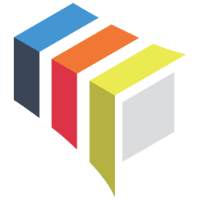QUESTIONS? CALL:
+1 (833) BOODSKAp
Medical Alerts with Boodskap's IoT Platform
PRODUCT DESCRIPTION
- Medical Alerts using IoT technology is a critical application that leverages wearable devices to provide real-time alerts for medical emergencies such as falls, irregular heartbeats, or other health anomalies. This practice enhances safety for elderly individuals and patients with chronic conditions by ensuring timely medical intervention. Boodskap's IoT Platform as a Service (PaaS) offers comprehensive solutions for medical alerts, integrating various sensors and devices to deliver actionable insights and predictive analytics.
- Boodskap’s IoT platform allows users and healthcare providers to collect, analyze, and act on data from various wearable devices. The platform’s robust data analytics and visualization tools enable real-time monitoring of vital signs and movement, helping users and caregivers respond quickly to medical emergencies.
- Medical alert devices with emergency call features
- Smartwatches with built-in health monitoring capabilities
- Wearable ECG monitors
- Accelerometers: Detect falls and sudden movements indicating a potential emergency.
- Heart Rate Sensors: Monitor heart rate for irregularities.
- ECG Sensors: Provide continuous heart monitoring to detect anomalies.
- GPS Sensors: Track the location of the user for emergency response.
- BLE (Bluetooth Low Energy): Used for short-range, low-power communication between wearable devices and the central IoT platform.
- NB-IoT (Narrowband IoT): Provides robust connectivity for wearables, especially in remote or challenging environments.
- LTE-M (Long Term Evolution for Machines): Ensures reliable communication for emergency alerts.
- MQTT (Message Queuing Telemetry Transport): Lightweight messaging protocol used for real-time data transmission between sensors and the IoT platform.
- An elderly individual using Boodskap’s IoT platform wears a medical alert device equipped with accelerometers, heart rate sensors, ECG sensors, and GPS. These sensors collect data continuously and transmit it via BLE to the Boodskap platform. The platform analyzes the data, providing real-time alerts to caregivers and healthcare providers in case of a fall or heart irregularity. The individual can also manually trigger an emergency call through the device. Caregivers can view the individual's location and health status on a dashboard, enabling them to respond quickly and efficiently to emergencies.
- Enhanced Safety: Provides immediate alerts in case of medical emergencies, ensuring timely intervention.
- Improved Health Monitoring: Continuously tracks vital signs and movement to detect health anomalies.
- Real-Time Alerts: Enables rapid response to emergencies, reducing the risk of severe health outcomes.
- Location Tracking: Offers real-time location data to caregivers, enhancing emergency response efficiency.
- Predictive Analytics: Anticipates potential health issues, enabling proactive management and better health outcomes. By leveraging Boodskap’s IoT platform, individuals and healthcare providers can enhance medical alert systems, leading to improved safety, timely medical interventions, and better overall health management.

